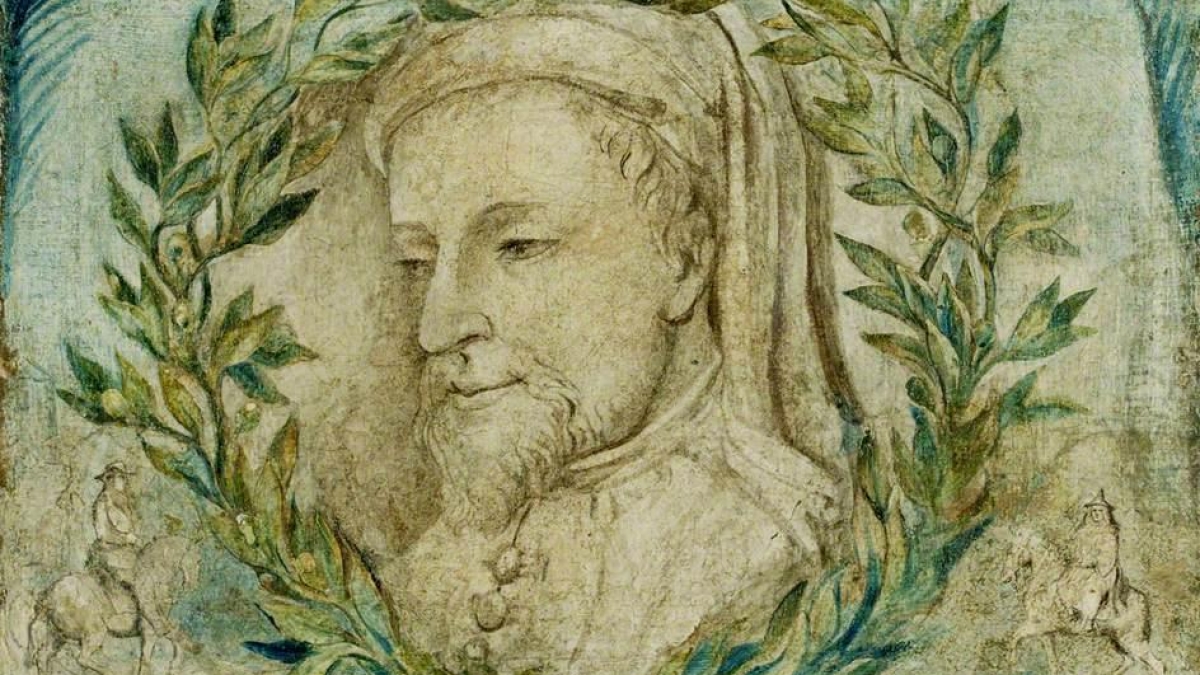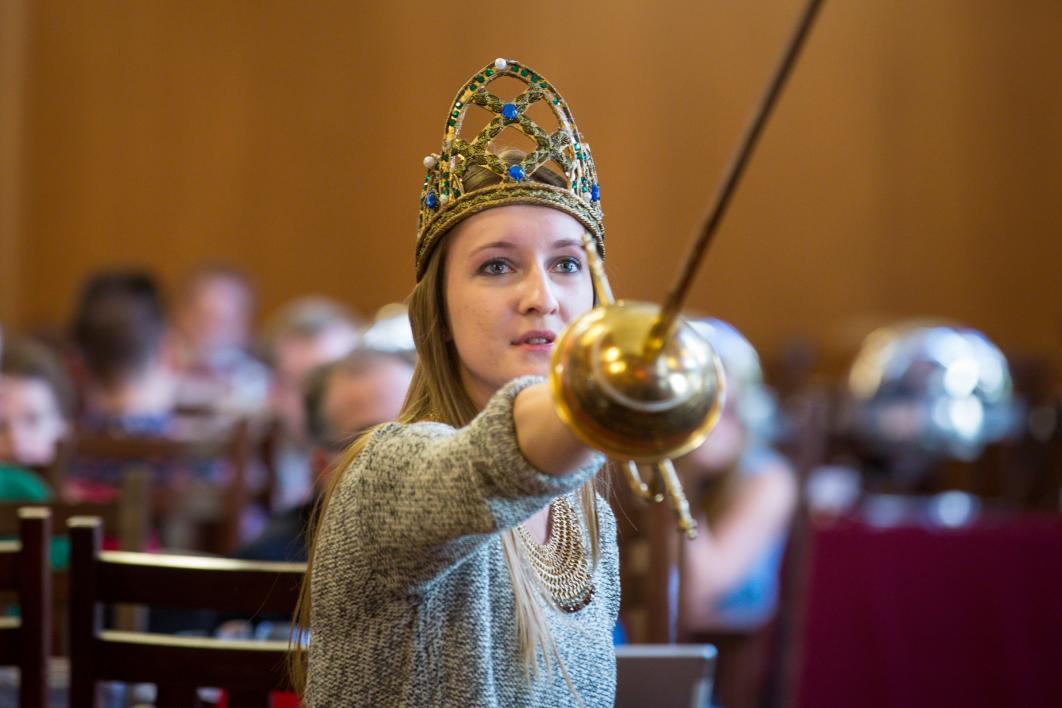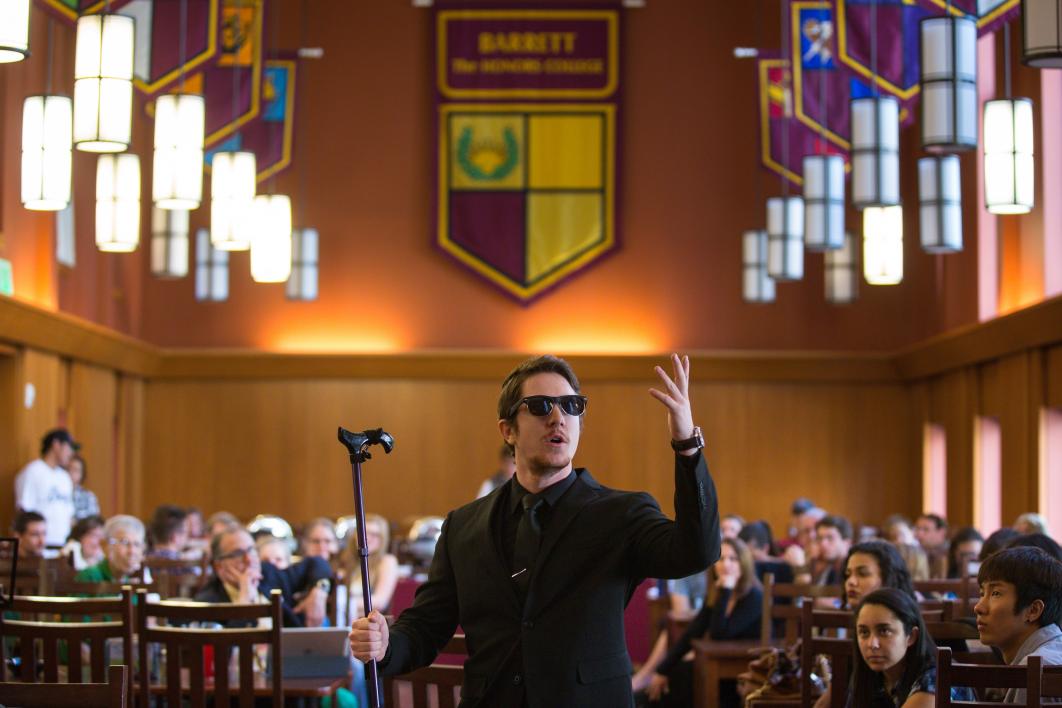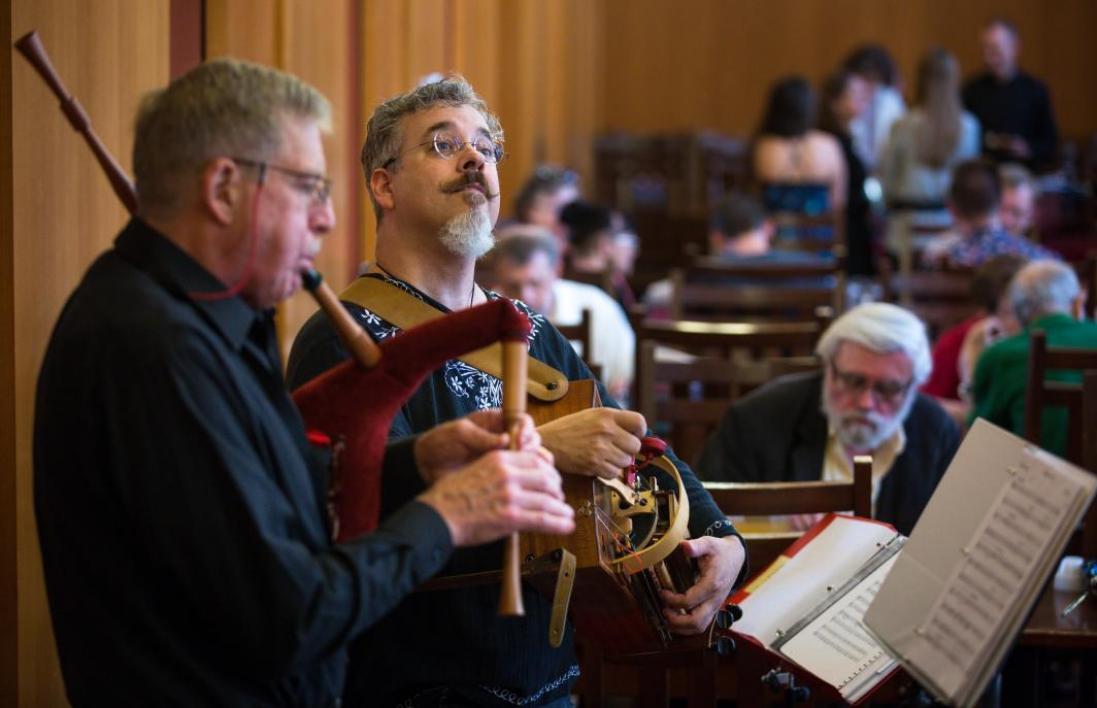Patience is a virtue. Nothing ventured, nothing gained. Time and tide wait for no man.
What these clever idioms have in common isn’t just their good advice — they all originate from the works of Geoffrey Chaucer.
Some may know him best as the guy who wrote those medieval stories they had to read in high school. But for centuries, to a great many people, Chaucer has been known as nothing less than the father of English literature.
“That is a paternal designation that perhaps in some ways obfuscates as much as it clarifies,” said ASU English professor Richard Newhauser. “In any case, it does show that there have been authors that have looked back to him. This extends the reception of Chaucer, the recognition of him as a literary precursor and model for poetic narrative in particular, which has continued right down to our present time.”
In acknowledgment of his lasting influence, the ASU Department of English The Department of English is an academic unit of the College of Liberal Arts and Sciences.will host the fifth biennial Chaucer Celebration on Friday, March 18, to commemorate the life and work of the medieval author with theater performances, concerts, academic discussions and even a medieval feastA medieval feast, you say? Indeed! Catered by Sun Devil Dining, it will feature pumpes (pork meatballs in almond milk) and salmon as entrees; ris engoule (rice cooked in milk and beef broth, colored with saffron); and potage of roysons (an apple raisin pudding) as dessert — and much more. It is part of a lineup of activities from 2:30 to 4:45 p.m. in the refectory at Barrett, the Honors College, including musical and theatrical performances..
A truly interdisciplinary event, faculty and staff from several departments and entities within the university will be participating, including the College of Liberal Arts and Sciences, the Herberger Institute for Design and the Arts, the Arizona Center for Medieval and Renaissance Studies, the Institute for Humanities Research, ASU Libraries and Sun Devil Dining.
“We’re really feasting our senses and our sense of history, as well,” said Newhauser.
An expert on Middle English literature, he will participate in the roundtable discussionIt will take place at 10 a.m. in Durham Language and Literature room 316. “Chaucer and Beauty” along with fellow ASU Department of English professor Robert Sturges and featured guest Maura Nolan, associate professor of English at University of California, Berkeley.
Nolan researches the role of the aesthetic in late-medieval vernacular literature. She is particularly interested in notions of the beautiful and the sublime in medieval literature as they relate to an emerging notion of literary style.
According to Newhauser, Chaucer had the ability to shift effortlessly between styles:
“He can be quite serious in stories like ‘A Knight’s Tale,’ or he can write tragedies, as in ‘The Monk’s Tale,’ or he can demonstrate philosophical depth, as in ‘The Tale of Melibee.’ He can also write really rollicking and wonderfully humorous tales like ‘The Miller’s Tale’ or ‘The Reeve’s Tale,’ ” Newhauser said. “That’s part of what gives him an appeal to a wide base of readers and a base of readers that extends over generations. That’s what makes his works classic.”
Since the Chaucer Celebration was first held in 2008, it has always taken place during the spring, just before Easter. That’s because the earliest documented mention of Chaucer comes from a record detailing clothing that was purchased for him so that he might participate in Easter celebrations as a page in service of the Countess of Ulster.
“This demonstrates how our understanding of history from the far-distant past is ultimately rooted in archival documents,” said Newhauser, who is currently at work on the creation of “The Chaucer Encyclopedia,” itself a historical document as it will be the first encyclopedia of Chaucer and his works to ever be completed. It will contain roughly 1,400 entries, 2,000 pages, 1 million words, and will include reinterpretations of Chaucer’s works from across the globe, reinforcing his status as an important literary figure not just of the English-speaking world.
As Newhauser sums it up, “The reputation of Chaucer is really a worldwide phenomenon.”
For a more detailed listing of the Chaucer Celebration events, click here. All events are free and open to the public.
Top image from Wikimedia Commons: "Geoffrey Chaucer" c. 1800, tempura on canvas by William Blake (1757–1827).
More Arts, humanities and education

‘It all started at ASU’: Football player, theater alum makes the big screen
For filmmaker Ben Fritz, everything is about connection, relationships and overcoming expectations. “It’s about seeing people beyond how they see themselves,” he said. “When you create a space…

Lost languages mean lost cultures
By Alyssa Arns and Kristen LaRue-SandlerWhat if your language disappeared?Over the span of human existence, civilizations have come and gone. For many, the absence of written records means we know…

ASU graduate education programs are again ranked among best
Arizona State University’s Mary Lou Fulton College for Teaching and Learning Innovation continues to be one of the best graduate colleges of education in the United States, according to the…







